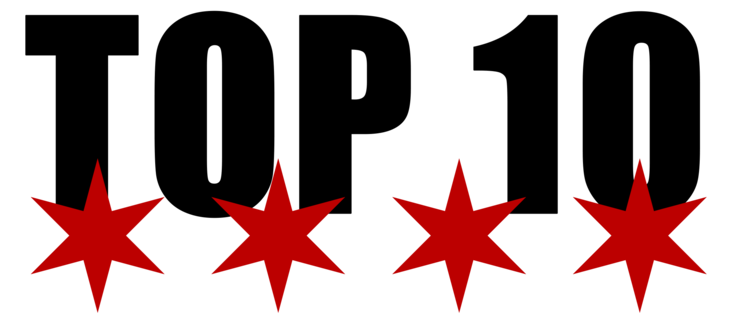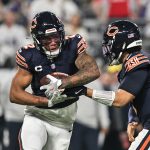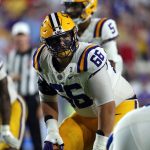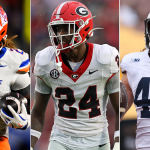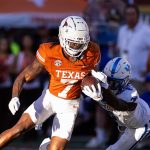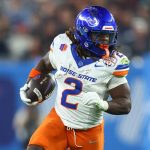General manager is often a term taken for granted in Chicago Bears history. The position didn’t exist for the first 55 years of the team’s existence. That was because George Halas ran the team in every aspect from ownership to coaching. He acquired players so there was never a need to have a GM. So how did this man come to change all that when he hired a 46-year old named Jim Finks to become the first in franchise history?
As with anything earthshaking, there are several factors that will be explored. Finks was born in St. Louis, Missouri on August 31st, 1927. He soon learned the values of how to survive tough times. The stock market crashed just two years later and Finks spent his childhood growing up in the heart of the Great Depression. A time when many of the desires of a successful life seemed like a lost dream.
Hoping for opportunities elsewhere, his parents moved the family to Salem, Illinois where he would attend high school. There the traits that would eventually make him a success in professional sports began to emerge. He was quite the athlete during his time there, starring in two sports. He was the school’s quarterback and punter, winning All-State honors in 1945. In addition, he was also captain of the basketball team as a senior. The year before, he’d helped them win their last regional championship.
This success earned him a scholarship at Tulsa where he starred at quarterback. He was named All-Conference twice and set multiple school records. All while running the T-formation offense, which Halas had made famous in Chicago during that era.
Subscribe to the BFR Youtube channel and ride shotgun with Dave and Ficky as they break down Bears football like nobody else.
So one could say the fates were lining up for Finks.
Jim Finks: The Traveler
Finks did enough in college to become a 12th round pick in the 1949 NFL draft by the Pittsburgh Steelers. He spent his first three years as a backup with only minimal playing time. That changed in 1952 when he became the starter. He had a reasonably good year, throwing for 2,307 yards with 20 touchdown passes and 19 interceptions. He also ran for five scores too.
Unfortunately, that would prove to be his career peak. Finks steadily regressed over the next three years, throwing more and more interceptions until he was finally released in 1956. It’s fair to wonder if his playing career might’ve gone differently had he ended up on a better team. Keep in mind this was a Steelers franchise that let Johnny Unitas slip through their fingers.
Finks wasn’t discouraged though. He went to Notre Dame where he became a coach that year. This led to an opportunity to become a player-coach for the Calgary Stampeders in the Canadian Football League. It was there that people noticed the man had an impressive eye for scouting. Thus that same year in 1957 he became their general manager.
With his help, the organization would embark on a massive turnaround. Within three years, he had the team back in the playoffs. Then in 1961 and 1962, they made it to the Semi-Finals. The first time that had happened since the end of the 1940s. After going 10-4 in 1963, their best record under his direction, he was lured back to the United States.
The team interested in his services? None other than the Minnesota Vikings.
The Dark Ages
At the same time, Finks was seeing his NFL career enter its biggest phase, the Chicago Bears were watching an era of glory come to an end. They were the defending champions going into 1964 but it was clear that the team was starting to age. They needed fresh blood to carry them into the next generation. Halas, their indomitable founder, delivered his final masterstroke in the GM capacity a year later when he secured linebacker Dick Butkus and running back Gale Sayers with consecutive picks.
That would prove to be the high water mark though. Halas began to wind down his career and retired from coaching after the 1967 season. This led to his son, George Halas Jr. and Director of Player Personnel Bobby Watson taking greater control of the team’s direction. This was something Halas had wanted to do, handing the business off to his son.
Unfortunately, neither Halas Jr. nor Watson were up to the task.
What followed was one of the ugliest strings of drafting Chicago would endure. It started with 1st round bust Mike Hull that year, a failed attempt to help replace the injury-riddled Sayers. It continued with the unremarkable Rufus Mayes in 1969. That same year the team went 1-13, the worst record in franchise history. Yet even that couldn’t help fix their drafting woes.
A subsequent coin toss saw them lose the #1 pick to Pittsburgh, who used it on quarterback Terry Bradshaw. The Bears then traded their #2 pick for three players in Lee Roy Caffey, Elijah Pitts, and Bob Hyland from Green Bay. None of those three men lasted more than one season in Chicago. To this day it remains one of the worst trades ever conducted by a Bears front office.
If you can’t beat them, steal from them
After a number of down years as an expansion team in the early 1960s, the Vikings wanted to start making a genuine push towards respectability. Finks, with his scouting prowess and NFL experience, seemed like a logical fit. It took some time for him to get a firm grasp of the team’s situation. Three years as it turns out, but by 1967 he had a blueprint in place for how he felt he could turn Minnesota into a winning football.
What followed was one of the most remarkable offseasons in NFL history. It started in controversial fashion when Finks granted the request of quarterback Fran Tarkenton to be traded to the New York Giants. With the array of draft picks the team received in return, Finks set the stage for a landmark spring. He just needed a head coach to help him do it.
His choice ended up coming from his Canadian background. The team that had dominated the CFL for most of Finks’ tenure up there were the Winnipeg Blue Bombers. From 1957 to 1966, they played in six Grey Cup finals and won four championships.
The man leading those teams was Wisconsin native Harry “Bud” Grant.
Grant had played in the NFL for three seasons in Philadelphia before finishing his career in Winnipeg and transitioning to head coach. Minnesota had actually tried to hire him back in 1961 but he’d declined. Finks though was in charge this time and his CFL background and reputation for scouting was enough to entice the head coach down to Minneapolis.
All that was left was to put a team on the field he could turn into a winner. There was just one problem. The GM was going through a serious health issue. His gall bladder was dangerously inflamed and needed to be removed. However, the draft was at hand and Finks couldn’t afford to miss it. So a rather crazy solution was found.
Doctors reluctantly postponed gall-bladder surgery and allowed Finks to install a phone and turn his room into draft headquarters while treating him with pain killer.
“He was a miserable son of a gun that day. Nasty. Like a bear with a sore paw,” recalled Bill McGrane, the Vikings’ public relations director at the time.
One thing became certain that day. Finks could play with pain. In a matter of 24 hours, he added seven players who would become starters for the Vikings in the coming years. Four of them became Pro Bowlers. One, defensive tackle Alan Page, would land in Canton, Ohio with a gold Hall of Fame jacket.
Most agree that draft class was the foundation of what followed.
Between ’67 and 1973, the Vikings would make the playoffs five times and win a berth in the Super Bowl twice. All of which was thanks to an array of incredible roster additions including all-time interceptions leader Paul Krause and Hall of Fame tackle Ron Yary the next year in 1968. Then brought Tarkenton back via trade in 1972 that sparked their continued success the rest of the decade.
One team that was watching this closely, in most part because they had no choice, was the Bears. During that same span, they had gone 5-8-1 against the Vikings. This after starting out 8-3-1 against them. Halas recognized the work Finks had done to shift the balance of power. So when the GM suddenly resigned after the ’73 season, Papa Bear was ready to pounce.
Lightning strikes
Finks didn’t arrive in time to handle the Bears 1974 draft. So they were forced to endure one more mediocre class. By this point, the man wasn’t really phased by tall challenges. He’d turned around Calgary in the CFL and did the same with Minnesota. Even so, Chicago was at its lowest point. There was no optimism in the organization. They hadn’t had a winning season since 1965 and hadn’t even won more than four games the previous two years.
It didn’t change that season. So Finks knew some major changes were needed. Most critically, he had to find a foundational player. Somebody he could build the team around. Sayer and Butkus were gone. Doug Buffone and Wally Chambers were both good but not stars. Chicago needed a hero. With a little luck, they might find one in the 1975 draft.
Their chances were good. The Bears held the #4 overall pick that year. Ironically the benefit of a won coin toss with Cleveland prior to the event. It looked like the incoming class was strong in terms of talent. Could things finally be swinging their way? They didn’t know it at the time, but the answer was an emphatic yes.
After the Dallas Cowboys took one of their top option, Maryland defensive tackle Randy White, off the board at #2 the decision was made easy for Finks. He used his first ever selection with the Bears on an unheralded running back out of Jackson State named Walter Payton. The man who would become “Sweetness” would eventually retire as the NFL’s all-time leading rusher and be the catalyst for dragging the Bears out of the mud over the next decade.
Finks wasn’t done though.
That entire draft would prove to be one of the most impressive in Bears history. In addition to Payton, he found six other players who would start at least three seasons for the team in the coming years. This included productive pass rusher Mike Hartenstine, tenacious cornerback Virgil Livers, and hard-hitting safety Doug Plank.
That group would form the core that would end the longest playoff drought in franchise history (14 years) in 1977. Finks had done the impossible in the minds of many. The question was could he succeed where he’d failed in Minnesota? Could he bring Chicago a championship?
A defensive wizard
If people weren’t sold on whether Finks could build a great defense based on the work he did in Minnesota (finished top 5 overall five times) then it was his time in Chicago that erased any of those doubts. The difference this time though is Finks would do it more gradually. After a strong start with Hartenstine in ’75 and safety Gary Fencik in 1976, things went quiet for a couple of years.
Then the forges of the greatest defense in Bears history truly heated up in 1979. The origins of it began with a daring trade Finks made with Tampa Bay. One where he gave up three-time Pro Bowler Wally Chambers in exchange for the Bucs’ 1st round pick the next year. That pick became the 4th overall. Chicago ended up taking Arkansas defensive end Dan Hampton.
The Bears had found their next great defensive anchor in the future Hall of Famer. From there it became a question of building around him. This Fink would do at a prodigious rate:
- 1980 – Drafted linebacker Otis Wilson in the 1st round
- 1981 – Drafted linebacker Mike Singletary in the 2nd round
- 1981 – Signed free agent defensive tackle Steve McMichael
- 1983 – Drafted Mike Richardson, Dave Duerson, and Richard Dent in the 2nd, 3rd, and 8th rounds
In addition to Hampton, both Singletary and Dent would end up in the Hall of Fame. Wilson and Duerson would end up as Pro Bowlers. It’s hard to imagine that during this remarkable run of talent acquisition, Finks saw his team make the playoffs only one time in ’79. How could this have been possible?
There are two answers to that question.
Reason #1: The Achilles heel
Finks ended up in the Hall of Fame and deservedly so. However, the man never won a championship. Rather incredible to think about given the amazing work he did in both Minnesota and Chicago. What could possibly have held him back? The answer, in a rather ironic twist, was his inability to get the quarterback position solved.
During his best season in Minnesota, Finks relied on veteran Joe Kapp whom he’d signed from the Canadian League. While a great leader and tough as nails, Kapp had limitations. He never threw for over 2,000 yards in his career and had just 19 touchdown passes in his best season in 1969. Seven of those came in one game against the Baltimore Colts. In the Super Bowl against Kansas City, he had two costly interceptions and also fumbled.
That was a big reason why Finks traded to get Tarkenton back in ’73. Yet that too didn’t come to fruition. Though Minnesota again returned to the Super Bowl, Tarkenton didn’t perform like the Hall of Famer he would eventually be. He had an interception and a fumble while failing to throw for 200 yards. This trend would hold throughout the rest of his career.
When Finks got to the Bears, the problems only became magnified.
He never seemed interested in spending high draft choices on the position. His big solution early in his run as GM was Bob Avellini, a 6th round pick out of Maryland in ’75. He also brought back veteran Virgil Carter in ’76 despite an underwhelming run with the Bears back in the late 1960s. Avellini threw more double the interceptions to touchdowns in his Bears career (33 to 69).
Finks seemed to recognize the problem and was finally stirred to action by the ’77 season. Sadly, his solution would prove to be the worst move of his career as Bears GM. It came when he traded the team’s 1st round pick in 1978 to the Cleveland Browns in exchange for quarterback Mike Phipps.
Phipps had been a star at Purdue in college, eventually becoming the #3 overall pick in 1970. However, in seven years with the Browns he’s underwhelmed 40 touchdowns and 81 interceptions. It is hard to understand what exactly compelled Finks to make that move. It wasn’t like the Bears coaching situation was more adept at developing QBs than Cleveland. Phipps wasn’t going to solve anything and didn’t.
He went 14-6 as a starter but threw 15 touchdowns to 27 interceptions. So he did them more harm than good. What really stings about that trade? Had the Bears held on to the pick, they could’ve used it to take a big kid out of Grambling in the 1978 draft named Doug Williams. He went 17th overall to Tampa Bay and led them to the NFC championship the next year. He would eventually win the Super Bowl with Washington in 1987.
Incredibly, the worst was still to come.
Finks had the golden ticket in his hands two years later in the 1979 draft. The Bears had just secured Hampton and began scoping the board for offensive help. His right-hand man Bill Tobin continued to push for a young quarterback out of Notre Dame named Joe Montana. When Chicago went on the clock in the 3rd round, the kid was still available. What happened next would be something Finks would come to regret the rest of his career.
The Bears were up and Montana was available. Tobin’s heart began to race. Vainisi said he stood and removed a magnet with Montana’s name on it from the bullpen area of the team’s draft board. He placed it under the Bears’ picks.
And then Finks, clearly in command, spoke up. “Put him back in the bullpen,” Finks said, according to Vainisi…
…By now the Bears were deep into the allotted time on the draft clock. As the seconds wound down, Finks announced the Bears would take Willie McClendon from Georgia, the highest-rated running back remaining on the Bears’ board.
“I was stunned,” Vainisi said.
“Bill Tobin almost had apoplexy,” McGrane said. “He was beside himself, sick he didn’t get Montana.”
Montana became one of the greatest quarterbacks in NFL history, winning four Super Bowls with the San Francisco 49ers from 1981 to 1989. During that span, he beat the Bears in the NFC championship game twice. Stinging reminders of what could’ve been. Finks finally did get the position right when he drafted Jim McMahon 5th overall, but that was in 1982, seven years after he’d taken over.
Even then one couldn’t say it was a complete win for him.
McMahon was a rock solid passer and a tremendous leader. He had a fatal flaw though. The man was brittle. McMahon never started a full season in his Bears career. He suffered a litany of different injuries to his shoulder, back, kidney, ribs, and head. His reckless style of play which included a refusal to slide only made matters worse. Many believe he’s the best QB of the Super Bowl era for Chicago, and he was gone before his 30th birthday.
Even after McMahon had arrived there were signs Finks still had no grasp of what a great quarterback looked like.
The 1983 draft was his best and the greatest in team history. What many don’t remember is the GM almost started it off by taking a quarterback. This would’ve been fine. Though John Elway had gone #1 overall to Baltimore, two guys named Dan Marino and Jim Kelly were still available when the Bears picked at #6 overall. Only they weren’t the ones he had his eye on.
“Before taking (Jimbo) Covert, Bears general manager Jim Finks had considered Clemson safety Terry Kinard, who went 10th to the Giants; and Illinois quarterback Tony Eason, who went 15th to the Patriots.”
Most Bears fans will remember Eason for his laughable attempts to throw against the Buddy Ryan defense in Super Bowl XX. The Illinois product did have better games in his career but he’s remembered in New England as a bust. One who ended up having the same problems as McMahon in terms of staying healthy. He was out of the league before his 32nd birthday.
Even in the greatest quarterback draft in history, Finks had eyes for the wrong guy.
Reason #2: Lost magic
In Minnesota, one of the crucial decisions of their turnaround came when Finks chose to hire Bud Grant. It was the best coaching acquisition in franchise history and a sign that the GM knew what the great ones operated like. Such thoughts were premature though. Upon arrival in Chicago, Finks would come to be plagued by a mixture of bad luck and lack of initiative in filling that position before the power was taken away from him.
His first choice actually had promise. The Bears brought in Jack Pardee, a former player who’d spent 1974 in the upstart World Football League as a head coach. He went 14-6 while there and lost their only championship game by one point. That experience was enough to convince Finks he had the chops to help turn the Bears around.
This Pardee would do. After a tough 4-10 start in 1975, Chicago reached their first .500 record since 1968 with a 7-7 mark in 1976. Then the next season they went 9-5 and finally broke through to the postseason. Their first trip in 14 years. Pardee had proven his chops and Finks was prepared for him to be the guy moving forward.
Then fate got in the way.
The Washington Redskins vacated their head coaching position at the start of 1978. Pardee, who’d played his final three years there and had fallen in love with the organization, realized he had to have that job. So in order to interview for it, he shockingly resigned as head coach in Chicago.
“I have mixed emotions about this whole thing. I love this (Chicago) community and this team but those are also the same emotions I have about Washington.”
Pardee succeeded in his goal but had left the Bears high and dry to get it. Finks was suddenly put on the spot. He hadn’t expected to be searching for a new coach when that year began and didn’t do any preliminary research on possible candidates. He even grumbled about that after the entire mess had transpired.
“I’ve got no quarrel with anybody trying to improve himself. We all have different likes and dislikes. I wish he had handled things differently. I wish I’d have known a little sooner.”
Maybe if he had, he would’ve seen how stacked the lineup of young, upcoming coaches really was. A list that includes Cowboys assistant Dan Reeves, former Cardinals head coach Don Coryell, and Stanford head coach Bill Walsh.
All three men would have highly successful runs in the 1980s. Reeves went to three Super Bowls in Denver. Coryell revolutionized offenses with the San Diego Chargers and went to two AFC championships. Walsh? He won three Super Bowls and ended up in the Hall of Fame.
Unwilling to take a risk on unknowns, Finks fell back on what worked for him in Minnesota. He went after somebody he’d seen in action personally. Neill Armstrong had been a quarterback and then a coach in the CFL in the 1950s and ’60s. Then he joined Grant’s staff in Minnesota in 1970 and became one of their key defensive assistant coaches. From then to ’77, his units finished no lower than 3rd in points allowed six times.
It seemed like a logical and sound choice.
It just wasn’t an inspired one. Armstrong had already been a head coach in Canada and while he did make the playoffs a few times, his teams were never considered genuine championship threats. Something always seemed to be missing. Armstrong claimed to be a good teacher, and that was true to some extent. What he couldn’t do was motivate. He couldn’t inspire players to take their games higher.
For the next four seasons, the Bears mired in mediocrity. Outside of a 10-6 run in ’79 that reached the playoffs, Armstrong went 20-28 as head coach in Chicago. With each passing year, Halas grew more and more agitated. By 1982, he got fed up. He fired Armstrong and took over the search for a replacement personally, not even consulting Finks about it.
This led to the hiring of Cowboys assistant Mike Ditka, a move the GM was against. This led to a shift in the power structure because he knew Ditka did not answer to Finks. While he still held power over the roster, the new head coach could basically do whatever he wanted. This only made the uneasy relationship with Halas worse.
Fading relationship with Papa Bear
Things weren’t always tough between Finks and the Bears owner, but they’d started to get worse by the start of the ’80s as the lack of progress in the postseason continued. The GM started to lose greater control of the team and wasn’t happy about it. Virginia McCaskey even tried to mediate between the two, but to no avail. Finks could’ve resigned, but he wanted to stay committed to his contract for the time being.
“George’s daughter [Mrs. Ed McCaskey] finally gave up in her efforts to resolve those differences,” another source told the Tribune.
“So Jim is determined to eat crow for the time being and see what develops. Jim is pretty strong-willed and, though he left the Minnesota Vikings [where Finks had an outstanding record] for an executive position with the National Football League when he couldn’t get everything he was after, he isn’t about to walk away from this. There’s too much money at stake.”
It’s a blessing he did. Finks stuck around just long enough to run the Bears’ draft in 1983, giving them one final immense infusion of talent that would eventually carry them to a championship two years later. The man himself wouldn’t be around to see it. He finally stepped down that August before the season began after he’d fulfilled his duties of signing every free agent and draft pick to their contracts.
Barely a month later, he became president and CEO of the Chicago Cubs. Both teams would make the playoffs a year later in 1984. The Cubs for the first time in 39 years.
Vindication and appreciation
So who was right between Finks and Halas? In truth, both were. Halas was right about Ditka being the one to finally get the Bears over the hump as took place in 1985. However, Finks was also proven correct. Though Ditka won that title and made the playoffs seven times in his career, time proved his tenure to be somewhat underachieving. He failed to reach another Super Bowl and had less and less success as the well of talent Finks filled began to dry up.
Indeed, the Bears felt what life was like without the GM not too long after he left. Things seemed fine at first. They drafted Wilber Marshall in the 1st round and Shaun Gayle in the 10th round of the 1984 draft. Both were eventual Pro Bowlers for their defense. However, as time went on the absence of Finks became impossible to ignore.
From 1975 to 1983, the Bears selected 10 eventual Pro Bowl players including four Hall of Famers. In the nine offseasons following his departure, they selected four eventual Pro Bowlers and not a single Hall of Famer. It’s hard not to wonder how different things might’ve been had he stayed.
Especially given what he accomplished when he returned to the NFL.
The New Orleans Saints hired him as GM in 1986. Once again he was inheriting a project that had not experienced winning of any kind in almost two decades. True to form he started changing the culture immediately. He hired Jim Mora as their next head coach. Again he took the similar route he had with Pardee years before, plucking the man from a folding rival league in the USFL. Mora had won both championships while there and proved to be the right man for the job.
From that year to 1992, Finks would end up drafting eight players who would reach the Pro Bowl. This included linebacker Pat Swilling. He also scored two huge free agent hits when he signed linebackers Sam Mills and Vaughan Johnson, fresh from their own stints in the USFL. Together with Swilling and future Hall of Famer Rickey Jackson, they formed one of the greatest linebacking corps in NFL history.
The Saints ended up making the playoffs four times in a five-year span. Seeing that success, it’s hard not to wonder how things might’ve been different for the Bears had Finks stayed in control during the 1980s. Perhaps their run of mediocrity in the 1990s might’ve been avoided and maybe they could’ve claimed another Super Bowl that ended up eluding them.
Bears fans will never know.
Finks died in 1994 during a battle with lung cancer. He was only 66-years old. Just like that, Chicago’s first and best general manager was gone. Nobody can say his legacy was perfect. He had his faults. However, his ability to build great football rosters can never and will never be questioned. Every time you watch highlights and documentaries of the fabled 1985 team, keep his name in the back of your minds.
That doesn’t happen without Jim Finks. For that, we should give thanks.


